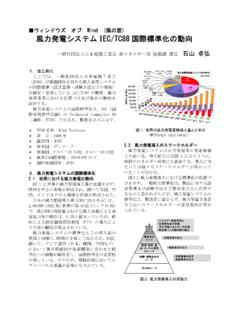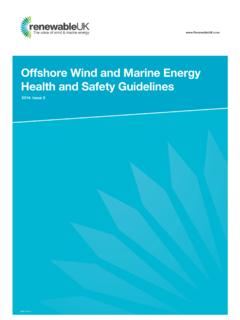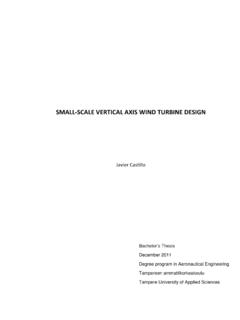Transcription of CERTIFICATE OF ANALYSIS - MBH
1 32X 61400 A. Page 1 of 4. July 2013. CERTIFICATE OF ANALYSIS . 32X 61400 (batch A). Certified Reference Material Information Type: ALUMINIUM BRONZE (WROUGHT). Form and Size: Disc ~45mm diameter Manufactured by: Copper Alloys Ltd Certified and Supplied by: MBH Analytical Ltd Assigned Values Percentage element by weight Element Sn Pb Zn Fe Ni Al Si 1 ( ). Value Uncertainty 2 - Element Mn P Mg Sb Ag Cu 1 ( ). Value Uncertainty 2 - Note: values given in parentheses are not certified - they are provided for information only. Definitions 1 The certified values are the present best estimates of the true content for each element. Each value is a panel consensus, based on the averaged results of an interlaboratory testing programme, detailed on page 3. 2 The uncertainty values are generated from the 95% confidence interval derived from the wet ANALYSIS results, in combination with a statistical assessment of the homogeneity data, as described on page 2.
2 Certified by: on 20th July 2013. MBH ANALYTICAL LIMITED _____. C Eveleigh 32X 61400 A. Page 2 of 4. July 2013. Method of Preparation This reference material was produced from commercial barstock, forged and heat-treated. The detailed metallurgical history of this material is unknown. Sampling Samples for chemical ANALYSIS were taken from various positions throughout the bar. At least 15% of all discs were selected for non-destructive homogeneity testing. Homogeneity The discs were checked for sample and batch uniformity using an optical emission spectrometer. Using the meaned data from each surface, standard deviation values were derived for each element as an indicator of any non-homogeneity (as determined for the specific sample size taken by the spectrometer). Chemical ANALYSIS ANALYSIS was carried out on millings taken from samples representative of the product.
3 It was performed by a panel of laboratories mostly operating within the terms of EN ISO/IEC 17025 - 2005, using documented standard reference methods and validated by appropriate reference materials. The individual values listed overpage are the average of each analyst's results. Estimation of Uncertainties Each element certified has been analysed by several laboratories, and 95% half-width confidence intervals (C(95%)) for the resultant mean values have been derived by the method shown on page 3. As a separate exercise, the degree of non-homogeneity of the batch for each element has been quantified by a programme of non-destructive application testing, discussed above. The final certified uncertainty for each element has been derived by combining these two factors, using the square- root of the summed squares.
4 Traceability Much of the analytical work performed to assess this material has been carried out by laboratories with proven competence, as indicated by their accreditation to ISO 17025. It is an implicit requirement for this accreditation that analytical work should be performed with due traceability, via an unbroken chain of comparisons, each with stated uncertainty, to primary standards such as the mole, or to nationally- or internationally-recognised reference materials. In addition, some of the results derived as part of this testing programme have traceability to NIST standards, as part of the analytical calibration or process control. Usage Intended use: With optical emission and X-ray fluorescence spectrometers. Recommended Copper alloys are generally prepared by machining on a mill or a lathe.
5 However, users method of use: are recommended to follow the calibration and sample preparation procedures specified by the relevant instrument manufacturer. Preparation should be the same for reference materials and the samples for test. A minimum of five consistent replicate analyses is recommended to provide the necessary sample size. Users are advised to check against possible bias between reference materials and production samples due to differences in metallurgical history, and be aware of possible inter-element effects. 32X 61400 A. Page 3 of 4. July 2013. Analytical Data Percentage element by weight Sample Sn Pb Zn Fe Ni Al Si 1 2 3 4 5 6 7 8 9 10 11 12 13 Mean ( ) Std Dev - C(95%) - Sample Mn P Mg Sb Ag Cu 1 2 3 4 5 6 7 < 8 < 9 10 11 12 13 14 Mean ( ) Std Dev - C(95%) - Note: C(95%) is the 95% half-width confidence interval derived from the equation: C(95%) = (t x SD)/ n where n is the number of available values, t is the Student's t value for n-1 degrees of freedom, and SD is the standard deviation of the test results.
6 32X 61400 A. Page 4 of 4. July 2013. Participating Laboratories Exova Ltd Middlesbrough, England UKAS accreditation 0239. Sheffield Assay Office Sheffield, England UKAS accreditation 0012. Universal Scientific Laboratory Pty Ltd Milperra, NSW, Australia NATA accreditation 0492. Institute of Iron & Steel Technology Shanghai, China CNAL accreditation 0783. Luo Yang Copper Luo Yang, He Nan, China CNAL accreditation 0173. Sargam Metals Pvt Ltd Chennai, India NABL accreditation 0025. Raghavendra Spectromet Laboratory Bangalore, India NABL accreditation 0371. Institute of Non-Ferrous Metals Gliwice, Poland PCA accreditation AB274. Tec-Eurolab Campogalliano, Italy ACCREDIA accreditation 52. Microlab Chennai, India London & Scandinavian Met Co Rotherham, England Coleshill Laboratories Ltd Birmingham, England Lithea Sro Brno, Czech Republic Note: to achieve the above accreditation (eg UKAS, NATA, etc), test houses must demonstrate conformity to the general requirements of EN ISO/IEC 17025.
7 Analytical Methods Used ELEMENT RESULT No. & METHOD. ICP-AES FAAS OTHER. Tin 3, 4, 6, 7, 9-11, 13 1, 5, 8, 12 2 photometric (phenyl fluorone). Lead 2-4, 6-8 1, 5. Zinc 2, 3, 5, 6, 8, 10, 11, 13 1, 4, 7, 9, 12. Iron 1, 3-5, 7-9, 11 2, 13 6 volumetric (dichromate). 10, 12 photometric (orthophenanthroline). Nickel 1, 3, 6, 7, 10-12 2, 4, 5, 9 8 volumetric (DMGO/EDTA). Aluminium 1-4, 9-11 12 5, 6 photometric (chrome azurol S). 7, 8 volumetric (EDTA). Silicon 3, 5-8, 10, 11, 13 - 1, 2, 4, 9, 12 photometric (molybdenum blue). Manganese 2, 5, 6, 9, 10, 12-14 1, 4, 7, 8, 11 3 photometric (periodate). Phosphorus 3, 4, 6-8, 10 - 1, 5, 11 photometric (molybdenum yellow). 2, 9 volumetric (alkalimetric). Magnesium 1, 2, 7-9 3-6, 10. Antimony 1, 3-6, 8 2, 7. Silver 2-5, 7-10, 12-14 1, 6-8, 11. Copper 6, 10, 11 - 3, 7 volumetric (thiosulfate).
8 1, 2, 4, 5, 8, 9 electrogravimetric Notes This Certified Reference Material has been produced and certified in accordance with the requirements of ISO Guide 34-2009, ISO Guide 31-2000 and ISO Guide 35-2006, taking into account the requirements of the ISO Guide to the Expression of Uncertainty in Measurement (GUM). This certification is applicable to the whole of the disc. However, in accordance with normal practice for emission spectrometry, it is appropriate to avoid usage of the centre of the disc, ~8 mm diameter. This material will remain stable provided adequate precautions are taken to protect it from cross-contamination, extremes of temperature and atmospheric moisture. All production records will be retained for a period of 20 years from the date of this CERTIFICATE . Technical support for this certification will therefore expire in July 2033, although we reserve the right to make changes as issue revisions, in the intervening period.
9 This material is also available in the form of chippings. The manufacture, ANALYSIS and certification of this product were supervised by C Eveleigh, PhD, Technical Director, MBH Analytical Ltd. The material to which this CERTIFICATE of ANALYSIS refers is supplied subject to our general conditions of sale.






